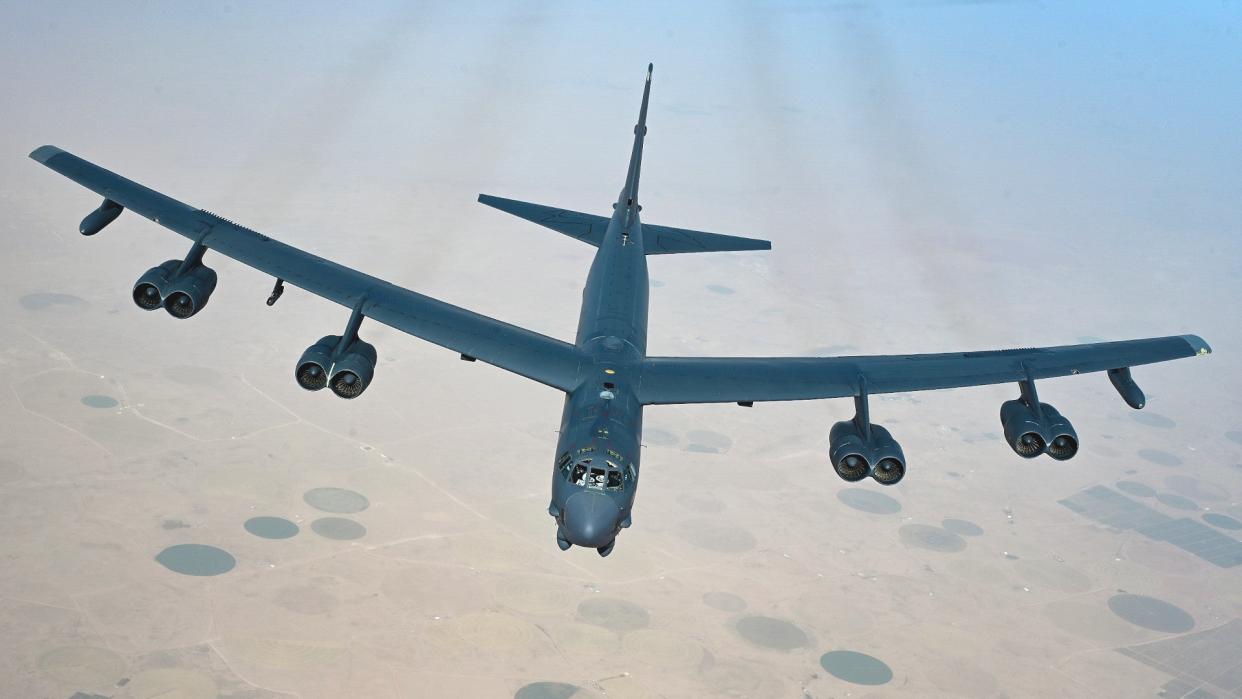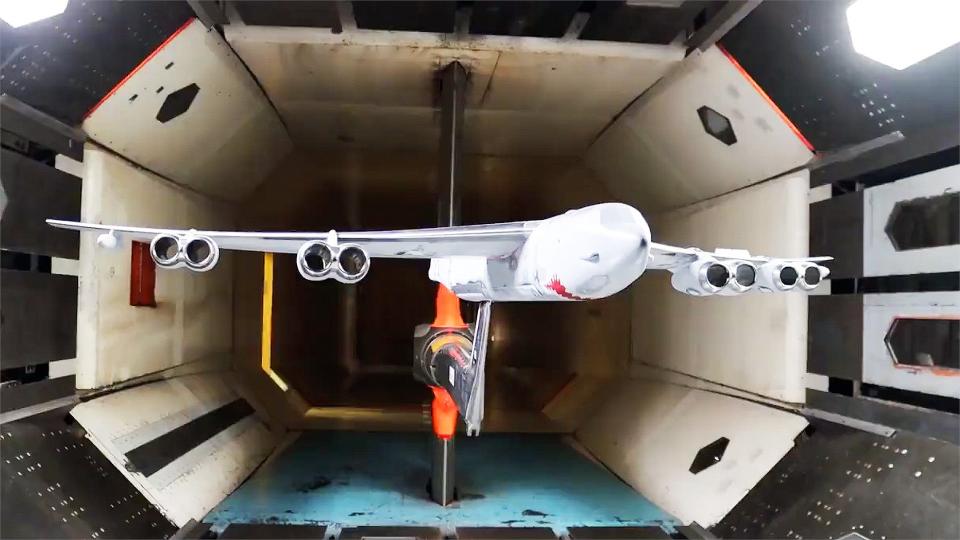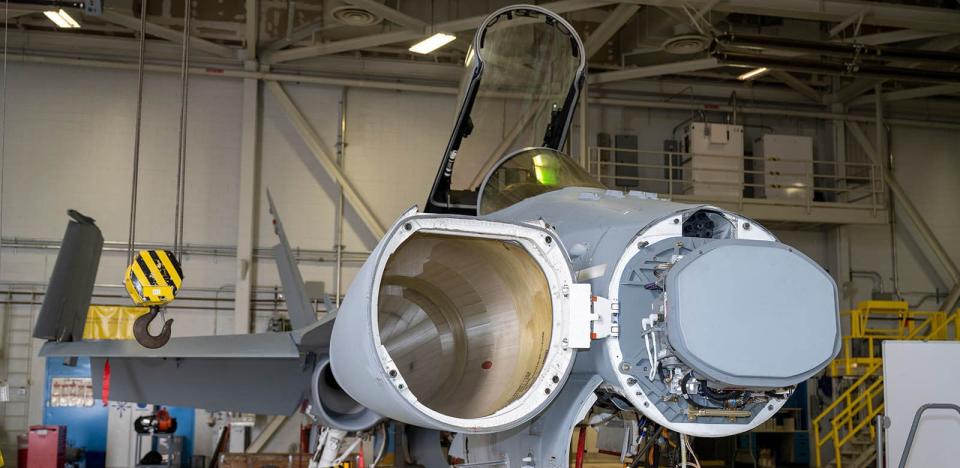B-52s With New Rolls Royce Engines Won't Fly Operational Missions Until 2033

The U.S. Air Force is not set to reach initial operational capability (IOC) with its re-engined B-52 bombers until Fiscal Year 2033, some three years later than originally planned, amid delays and cost growth. The critical radar upgrade program for the bombers has also seen its price tag grow and is experiencing schedule slips of its own, according to a new report from a Congressional watchdog.
New details about issues with the two most significant upgrades that the Air Force's B-52H bombers are set to receive in the coming years were included in an annual report on major U.S. military programs the Government Accountability Office (GAO) released earlier today. The War Zone just explored the broader modernization plan for the B-52s, which are set to be redesignated as B-52Js once all the work is completed and to serve through at least 2050, in an in-depth explainer video that you can watch below.
https://www.youtube.com/watch?v=Hf25X4hobdk
"The program noted that there have been program delays in part due to funding shortfalls to complete the detailed design, but that it has worked with the contractors and submitted budget requests to support critical design review in August 2025 and initial operational capability in mid-fiscal year 2033," GAO's new report says in regard to what is formally known as the B-52 Commercial Engine Replacement Program (CERP). "Delays ... are a result of underestimating the level of funding needed to complete the detailed design activities. Specifically, as the B-52 prototyping effort was extended from preliminary design to critical design, program officials received a proposal for the detailed design work."
In 2021, the Air Force announced that it had decided to replace the eight existing and out-of-production Pratt & Whitney TF33 engines on each of its B-52Hs on a one-for-one basis with new Rolls-Royce F130s. The F130s offer improved fuel economy and lower maintenance requirements, which are expected to translate to cost savings on sustainment and operational benefits, including extended range, as you read more about here.
https://www.youtube.com/watch?v=tEcpbIa0kl0
The Air Force has previously acknowledged delays, as well as cost growth, with CERP. However, as recently as June 2023, the service was still expecting to reach IOC with the re-engined B-52s in Fiscal Year 2030, as originally planned.
CERP's projected total cost is unclear, with GAO's new report saying that the Air Force "has not developed formal cost ... estimates" as of January of this year. In February, Defense News reported that the service was still awaiting updated cost data from Boeing, which is in charge of integrating the new engines. Last week, Inside Defense reported that data buried in the Air Force's 2025 Fiscal Year budget request pointed to an increase in CERP's procurement cost, specifically, of approximately $1 billion, from roughly $8 billion to some $9 billion.
The War Zone has reached out to the Air Force for an update on CERP's cost estimates.

The separate "B-52 RMP [Radar Modernization Program] declared a cost breach in September 2023 due to issues with lab testing," according to the new report from GAO. "Costs grew by 12.6 percent since the program’s initial estimate in 2021 due to additional hardware and labor for three integration labs, installation of test equipment, and an additional year of contractor support."
More specifically, "program officials stated that delays with the display and sensor processor are the primary cause. Specifically, the processor’s fiber optic converter—which provides communication between processors—did not work in testing."
Under RMP, the Air Force is looking to replace the mechanically-scanned AN/APQ-166 radars in each of its 76 B-52Hs with new active electronically-scanned array (AESA) types derived from the AN/APG-79. Versions of this radar are currently found on F/A-18E/F Super Hornets and EA-18G Growlers, as well as the U.S. Marine Corps' remaining legacy F/A-18 Hornets. For the B-52, the new radar promises greater range and fidelity, as well as improved general situational awareness and resistance to countermeasures. The radar could bring additional capabilities, including electronic warfare and communications support, and work together with the targeting pods already on the bombers to help with target acquisition and identification, including of potentially hostile aircraft. They will also be able to guide networked weapons onto their targets over long distances, provide a secondary ground moving target indicator (GMTI) and synthetic aperture radar surveillance capabilities. They may even be used to defend the B-52 from air-to-air threats.

GAO says that the RMP's total estimated cost in 2021 was $2.343 billion ($1.327 billion in developmental costs and another $1.015 billion in procurement costs). As of August 2023, this had risen to $2.580 billion ($1.437 billion and $1.143 billion for development and procurement, respectively).
The Air Force is again releasing those cost estimates and may not have a new price point established until March 2025, per GAO.
RMP is also experiencing delays, though they are not yet as significant as the ones impacting CERP. "The program delayed its low-rate production dates by an additional 6 months" to March 2025 and "other future dates by an average of 3 months," GAO says.
How this may have impacted the expected IOC date for B-52s with the new radar is unclear. As of June 2023, the Air Force said it was still hoping to reach that milestone in Fiscal Year 2027.
It is not an understatement to say CERP and RMP are critical to the future of the B-52, which is set to soldier on for decades to come. The Air Force's current plan is to retire its other current bombers, the B-1 and B-2, as the new stealthy B-21 Raider comes into service.

“While CERP is extremely important, and obviously B-52J gets a lot of attention, this [RMP] is probably one of the most critical programs that we’re doing and upgrades that we’re doing to make sure that this is combat effective," Air Force Col. Louis Ruscetta, B-52 senior materiel leader, told reporters during a tour of facilities in Oklahoma related to the upgrade work last year, according to Inside Defense.
The Air Force's B-52s are set to get a host of other upgrades in the coming years, as well. This includes new communication systems, improved electronic warfare suites, and new weapons, such as the nuclear-armed AGM-181A Long Range Stand Off (LRSO) cruise missile and future conventionally-armed hypersonic weapons, in the coming years. All of this is to help ensure the bombers, the last of which rolled off Boeing's production in the 1960s, will remain relevant nuclear and conventional strike platforms in future conflicts, including potential high-end ones like a major fight in the Pacific against China.

The new details about delays and cost growth with key B-52 upgrade programs also come amid talk about looming budget cuts across the board, even possibly to top-priority efforts like the Next Generation Air Dominance (NGAD) initiative, which are widely expected to come in the 2026 Fiscal Year.
“There are a lot of things that we probably might not have contemplated a few years ago, we’re taking a hard look at," Secretary of the Air Force Frank Kendall told Aviation Week about Fiscal Year 2026 budget planning in a recent interview.
“The way we were able to put together a five-year plan and submit it was through taking—what I think ultimately will turn out to be—unacceptable reductions in current force and sustainment," Kendall also said, according to a new report from Aviation Week today.
The Air Force's budget in Fiscal year 2026 will be "very, very thin across the board," Air Force Chief of Staff Gen. David Allvin said during a talk that the Air & Space Forces Association hosted last week.
How the Air Force's plans for modernizing its B-52 bombers may evolve over the next few years, and whether more delays and cost increases may emerge, remains to be seen.
The engine upgrade program, in particular, is still set to be one of the most substantial improvements to the B-52 in decades, even though the Air Force is currently expecting it to take 12 years to go from the initial contract award to B-52s powered by F130s flying actual operational missions. Nevertheless, it's a bit shocking to comprehend given that the original version of the bomber went from first flight to operational service in just around three years.
Contact the author: joe@twz.com

